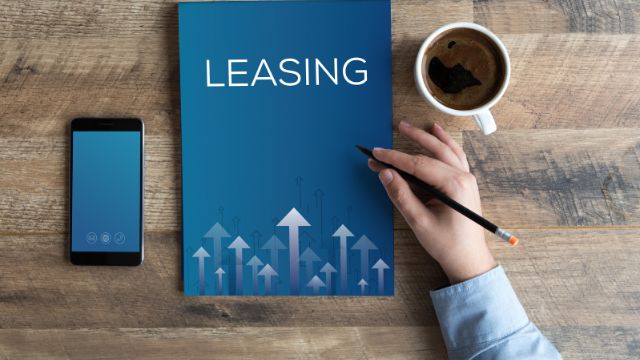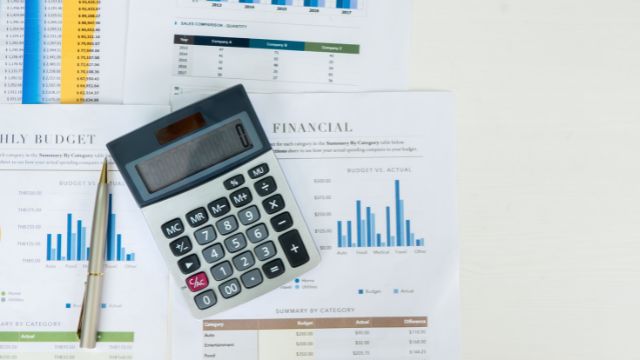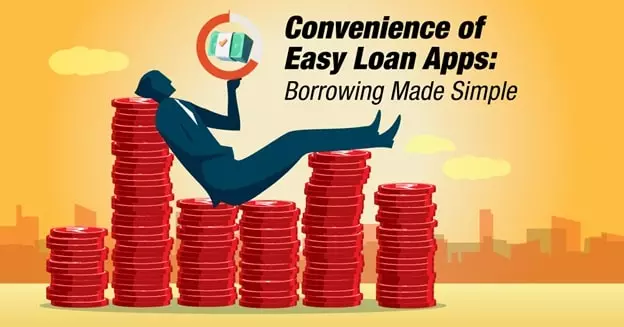You would have heard the word lease financing many times, but do you know what it is? Lease financing is a term that is used for medium and long-term financing of an asset. This asset can be expensive machinery or land owned by one party. Under lease financing, one entity gets the right to use the asset for a specific period for a specified payment as per the lease terms. The monthly payment compensates the asset owner for the transfer of usage rights, and at the same time, it also considers the depreciation of the asset being leased.
The party that owns the asset is called the lessor, while the party renting out the asset is called the lessee. So, during the lease financing, the lessee gets the right to use the asset, and the lessor gets the payment. The lessor retains the ownership of the asset, and the lessee usually doesn’t have any rights to modify the asset until and unless specified in the agreement. The asset is returned to the lessor at the end of the leasing period. Alternatively, the lessee can extend the lease or purchase the asset at a price quoted by the lessor. In addition, the main difference between a rental arrangement and the leasing arrangement is that the duration of the lease is much longer than the standard rent agreements.
By now, you would have a basic idea of the lease financing. It comes with its advantages and disadvantages. In the section below, we have talked about the advantages and disadvantages of lease financing. So, go ahead and check out the details now.
Advantages of Lease Financing
Lessor’s Perspective
- Asset Security – As per the general contracts, the lessor has the right to repossess the asset when the lessee fails to pay the lessor. In such a case, the interest of the lessor is protected. Remember that the lessor is the owner of the asset.
- Business Growth – Leasing is in high demand, and in such a case, the industry has amazing growth opportunities. If the lessor has extra capital, the same can be invested back to acquire more assets and develop the leasing business.
- Ownership Rights – The lessor retains the ownership rights. The benefits and the risks are with the lessee. The lessor is not worried about the business or the economy when the asset is leased since he gets a fixed monthly payment. At the end of the asset’s useful life, the lessor also gets the salvage value associated with the asset.
- Regular Income – The lessor can generate regular income in the form of rental payments that he receives from the lessee. The lessor might not have a business plan to generate a fixed income from the asset; hence, these rental payments act as a regular income. The ROI can be better on leasing, especially compared to interest payments.
- Tax Benefits – The lessor can get the tax benefit on his income. Technically, the lessor owns the asset, and hence he can claim the depreciation on the asset. This will reduce the tax burden and improve the income for the lessor. In addition, this situation is especially advantageous in case of high depreciation assets.
→ Also Read: Deficit Financing Advantages and Disadvantages
Lessee’s Perspective
- Better Balance Sheets – Considering that the lessee would have taken a loan to acquire the asset, the lessee’s balance sheet remains strong. The loan would not show up in the liability section. The debt-to-equity ratio remains high.
- Better Technology – In the case of machinery or technical equipment, it might not be possible for the lessee to spend that much money to get the latest technology. However, leasing lets the lessee acquire the latest machinery without spending a huge chunk of cash. If new technology is available, the lessee can end the lease and get the new equipment on lease.
- Ease of Use – The documentation required for leasing is minimal, and there is no need to wait for a loan or fund sanction. In such a case, leasing is considered to be a quick option. There are no wait times associated with the production and acquisition of the asset.
- Higher Flexibility – There is higher flexibility when we talk about lease financing. Suppose the business plan is not working out, or the lessee cannot generate enough income. In that case, he can end the lease without worrying about the salvage value or the liabilities associated with the asset.
- Higher Liquidity – The lessee might have the capital to acquire the asset without a loan, but the lessee may face a liquidity crunch in such a case. When the party opts for lease financing, there is no cash burn; hence, the liquidity position remains strong.
- Inflation Proofing – The lease payments are fixed, and if the country experiences high inflation, the lessee remains protected. The payment terms are fixed, and the annual hikes to the lease payments are also fixed. This protects the lessee from the price of rice and inflation.
- Ownership Transfer – At the end of the lease, the lessee may also have the option to purchase the asset at a lower or pre-determined cost per the agreement. This is a win-win situation for both the lessor and the lessee.
- Tax Benefits – Like the lessor, the lessee can also get tax benefits by claiming lease rents as an expense. This can help improve the profitability or factor in the operational cost of the asset.
Disadvantages of Lease Financing
Lessor’s Perspective
- Asset Damage – There is always a risk of asset damage involved in the trade. The lessor can minimize this risk by getting insurance for the asset, but that would mean additional cost to the lessor.
- Competitive Markets – The leasing market has become very competitive because the lessor may have to reduce the rent of certain assets. This can prevent the lessor from realizing the profits he would have projected otherwise.
- Evolving Technology – Technology is evolving rapidly; in such a case, the lessor is always at risk of obsolete technical equipment.
- High Inflation Conditions – The leasing business may not be very lucrative in case of a high inflation situation. The lease payments are fixed, which may soon translate into a loss for the lessor.
- Taxation Policy – In some cases, the government may have a taxation policy which could lead to double taxation. The lessor might have to pay the tax while acquiring the asset. In addition, the lessor would also have to pay taxes while leasing the asset.
Lessee’s Perspective
- Assets on Balance Sheet – Even though the lessee uses the asset, he still can’t add it to his balance sheet under the asset category. This means that the asset value of the lessee is understated.
- Fixed Cost – The lease payments are fixed costs that need to be paid irrespective of the business conditions and profitability. In case of poor revenues, this may translate to mounting business losses. Even if the business is not using the asset, they still have to pay the lease payments.
- Higher Cost – The lease cost is usually higher than the ownership cost over a long period. This is mainly because the lease payment also includes the profit margin for the lessor. In technical terms, it is called precipitation which is more expensive than loans.
- Modification to Assets – The contract disables the lessee from making modifications or changes to the asset. This may not give the required flexibility to the lessee.
- Restrictive Contracts – The contract may restrict the lessee from buying the asset at the end of the lease period. In addition, they may also govern the maintenance terms and contracts for the lessee.
Final Verdict
These were the pros and cons of the lease financing. It certainly has a fair amount of advantages when you look at it from the perspective of both parties. If you don’t have enough money to purchase an asset, then it makes sense to lease it. A classic example of this is the aviation industry. Most of the airline companies lease the aircraft from the leasing companies. This is a win-win situation for both parties as the airlines don’t have to spend much money on purchasing the aircraft, whereas the lessor earns a handsome margin on leasing the aircraft to the airlines.
Lease Financing FAQs
Q. What types of leases are available in India?
Ans: In India, there are mainly two types of leases:
- Financial Lease (Capital Lease): This type of lease transfers substantially all the risks and rewards incidental to ownership of the asset to the lessee. It is typically used for financing long-term assets.
- Operating Lease: In this type of lease, the lessor retains significant risks and benefits associated with ownership of the asset, and it is often used for short-term leasing arrangements.
Q. Who can avail lease financing in India?
Ans: Lease financing is available to various entities in India, including corporations, partnerships, sole proprietorships, and individuals, depending on the lessor’s policies and the specific terms of the lease agreement.
Q. What are the documentation and eligibility requirements for lease financing?
Ans: Documentation and eligibility requirements can vary depending on the lessor and the type of lease. Generally, lessees may need to provide business details, financial statements, KYC documents, and other information as required by the lessor.
What happens at the end of the lease term?
Ans: At the end of the lease term, the lessee typically has several options:
- Return the asset to the lessor.
- Renew the lease for an additional term.
- Purchase the asset at a predetermined residual value (in the case of financial leases).
- Upgrade to a newer asset (if applicable).
Q. Is lease financing regulated in India?
Ans: Yes, lease financing in India is regulated by various authorities, including the Reserve Bank of India (RBI), Securities and Exchange Board of India (SEBI), and the Ministry of Corporate Affairs (MCA). Additionally, specific regulations may apply based on the type of lessor and the nature of the lease transaction.
Q. What are the risks associated with lease financing?
Ans: Risks associated with lease financing in India may include:
- Obligations and commitments: Lessees are obligated to make lease payments for the duration of the lease term, which can affect cash flow.
- Residual value risk: In financial leases, lessees may bear the risk of the asset’s residual value being lower than expected at the end of the lease term.
- Regulatory and legal risks: Changes in regulations or legal disputes related to lease agreements can pose risks to both lessors and lessees.















